What a busy month February has been and will be until the end.
I intended on posting what I learned in each of our three pruning classes. I’ve changed my mind and this post will include what I have learned in the last two classes.
Both the pear tree and apple tree pruning classes had all of us pruning trees the whole time. That is great for me because I learn much better by doing something rather than reading about it or being told how to do it.
The arboretum has both central leader and open-vase style pear and apple trees.
Here is a central leader pear tree This tree is the open-vase style
A central leader tree has one branch that continues in line with the trunk and then branches growing off. Those branches are trained into lateral (horizontal) branches. With a central leader tree you would cut back that central branch 1/2 to 2/3 its height each year. We need to be able to safely reach the fruit.
With an open-vase style tree you need to keep the inside of the “vase” clear annually. This allows the most sunlight to all the fruit producing wood. You will also still prune for height.
One of the types of apples trees are called “tip bearing”, which produce fruit at the tip of slender shoots that grew last year. We have Granny Smith trees which are of this tip bearing type. For us the problem is that our trees need so much pruning that we will be cutting off the wood that has the potential to bear the fruit. You can’t shorten a branch without cutting off the tip.
What we will need to do is follow this general rule of thumb. Pay attention to the young shoots that grew off of last years wood. If that shoot is 9 inches or less we will leave it alone to bear fruit in the summer of 2015. If the shoot is longer than 9 inches we will head it back (losing the fruit potential for that year) to four or five buds. These buds will become shoots that will have tips and have the potential to bear fruit in the summer of 2016.
We will lose some fruit production in the short term but by heading the shoots/branches we can encourage other shoots to grow out the sides giving us more fruit potential in the future.
Hands on learning is so great. Not only does it imprint on my brain better but I became more comfortable with the concept. It became less painful to snip off fruit buds. Apples and pears are both “pome” fruits which mean that each fruit bud has the potential to produce five pieces of fruit. Realizing that a tree can only handle so much fruit it becomes clear that if you don’t snip off some of the buds then the others won’t produce as well. One of the ways to determine what to cut is to pull on the branch. This mimics the effect of a heavy fruit load. Based on how strong that branch seems you determine your cuts. On a thinner branch you may decide to make a headiug cut so as to shorten the branch. If the branch is nice and strong you will probably just snip off some of the buds where there are too many together.
Here are some nice diagrams that shows the difference between a heading cut and a thinning cut.
Heading cut:
A heading cut is one that cuts the branch off in the middle (usually new growth) leaving several buds left to grow. This cut will encourage lower buds to sprout and will create new vegetative growth.
Thinning cut:
A thinning cut cuts the branch off where it leaves the larger branch leaving no buds to grow. This cut doesn’t encourage vegetative growth. The energy for those branches is re-directed into remaining branches, making them grow more vigorously. (It is hard to see in the picture but the two branches that were cut off have a vertical line showing where the cut would be made.)
To review what I’ve learned:
Objective: Maximize fruit production while minimizing the growth of unproductive wood.
*Planning starts at the beginning: which cultivar to grow, root stock choice, scion choice, soil and spacing are all important. Since our fruit trees are already established we can’t change a lot.
*Thinning: this will help you have consistent annual production
*Pruning: In my mind this is the most difficult. We need to balance two things; cutting away things that inhibit sunlight reaching the fruiting wood and cutting off fruiting wood to encourage fruit growth. Pruning correctly will give a good balance of new growth the coming year as well as fruit production. Too much of one, and not any of another and either winter or summer pruning might need to be modified.
*Prune: dead, diseased or damaged wood. Also, anything that is crowded or crossing another branch.
*Always know why you are making a cut. Am I trying to encourage growth or eliminate something that is getting in the way of fruit production.
I am so grateful to have had this opportunity to learn about taking care of our fruit trees. The Home Orchard Society has other leaning events throughout the year. They also sell mason bees. We bought some and will be making homes for them so that within the next month we can add them to our orchard.
I hope you learned a little from my overview. Now comes the task of pruning all those trees.
Have a great day,
Karen
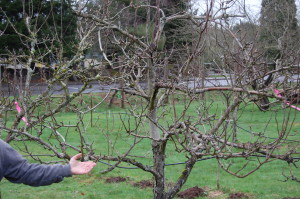
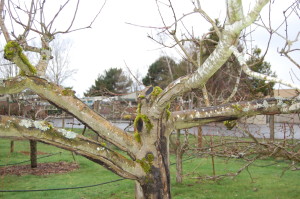
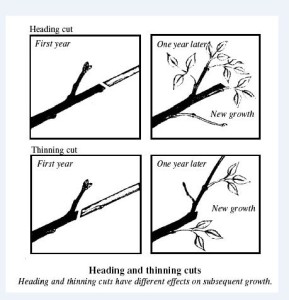
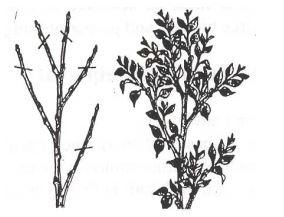
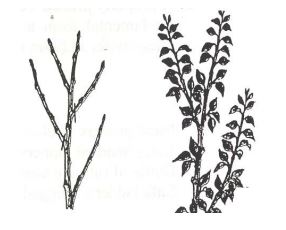
Can I come live with you?
YES! We would love that 🙂
Karen
Wow! You go girl. It sounds like these classes have been a great help to you and Michael. Good call Karen. You can now have peace about your trees and go forward with faith and confidence and not be fearful caring for them.
Have a joyful (busy, I know) week.
OOO
Yes, and another great help was you and mom making us dinner and dessert every Sunday after class.
We got to spend time with our family AND I didn’t have to cook on those days.
Hugs,
Karen